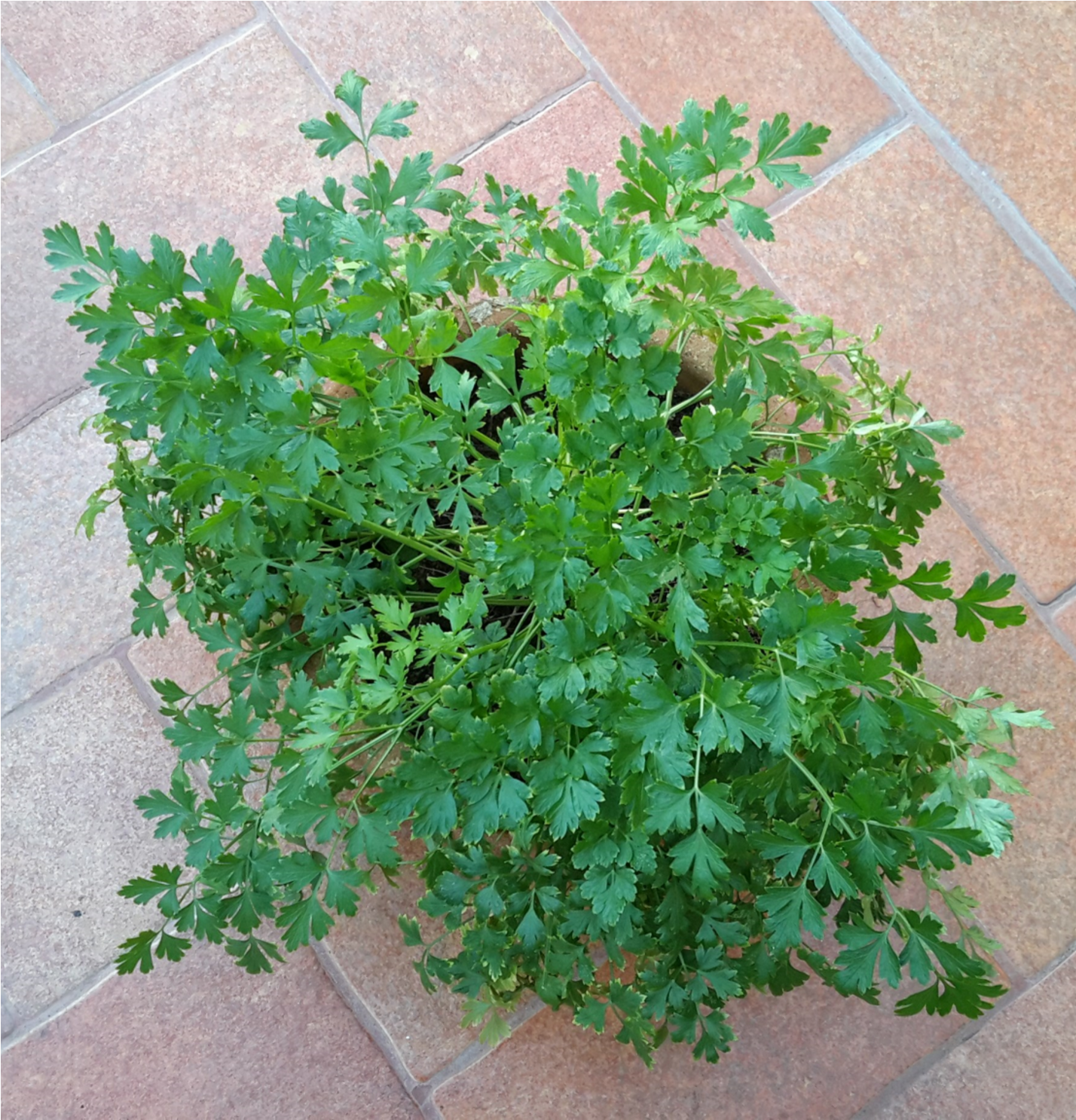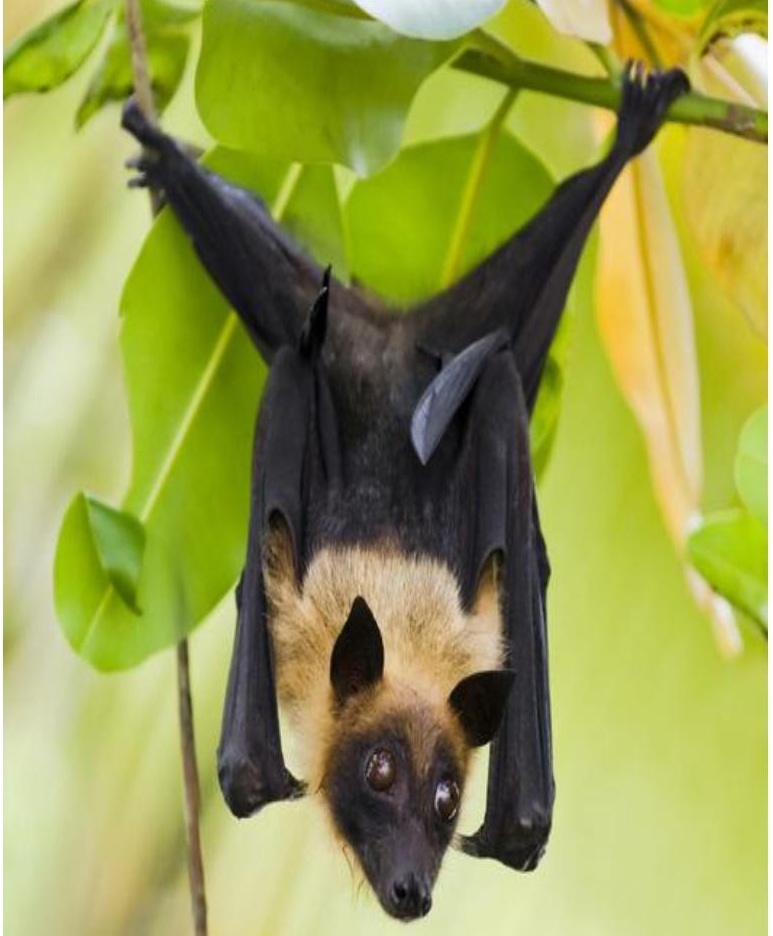By Tommy Clarkson from the January 2019 Edition
Parsley, Petroselinum crispum
Family: Apiaceae or Umbelliferae
Also known as: Garden Parsley

After the first year of looking like this, it will go to seed the next.
| (Why have I not written about Parsley before? Just didn’t think ads, soups, stocks and vinegars. Having the capacity to mask of it as a priority, I guess! But it’ll grow here in the semiodors, it can be used to cover up odors such as garlic and I tropics. I know, as I just found some I’d planted and forgotten have read that it has been used as a deodorant. (And if you about that is doing quite well, thank you!) want to get your head really spinning, delve into any of the many scholarly articles online regarding an array of research Actually, one of the real reasons I haven’t taken fingers to keyactivities focused on good old Petroselinum crispum!) board in its regard is that it is a biennial plant and, generally speaking, I only write about tropical perennials. But I remember The preceding all duly noted – getting back to what we know my mother growing this and putting it on the top of fresh butand perceive – Parsley is one of the most important culinary tered, split open, baked potatoes. (And between my genetic herbs in European cuisines. In fact, there are three varieties: Irish half and German half, suffice it to say, I really like baked curly-leaf parsley, Italian or flat-leaf parsley, and root parsley. potatoes!) The latter is grown for its tuberous, edible root with numerous cultivars for each variety. From one of my earliest acquired plant books, many years ago – A Handbook of Herbs, by Richard Marshall and Charles J. Ziga – Parsley has a very high content of vitamins A and C and iron, in comes this: “In the old days, when heroes still rode chariots, addition to being rich in chlorophyll. (Relative to all of this, parsley was more elevated in use and reputation than it is tohere’s another Nifty Nugget of Knowledge: Parsley is one of day. Greek warriors fed the leaves to their horses and crowns of the main components of tabbouleh which is often regarded as parsley . . . were given to the victors at the Isthmian and Nethe national dish of Lebanon. For those who may have forgot mean games. Since the plant was held sacred to the deceased ten, it is a delicious salad comprised of bulgar wheat, chopped they associated it with Achromous, the Herald of Death it was vegetables like cucumbers and tomatoes and large amounts used to decorate tombs. As a result, it had no place in the cuiof chopped, fresh parsley and mint leaves. (That all said, some sine of ancient Greece. But, by the middle ages, Parsley was say it can cause allergic skin reactions or anemia or liver/kidney widely grown in Northern Europe for both culinary ad mediciproblems.) nal purposes.” |
This interesting herb, with its intriguing past, has several medicinal applications. Beyond its rather strong diuretic capabilities, its properties include that of being aperient, carminative and acting as a tonic. In addition, is has soothing qualities when added to bath water! Culinarily, beyond often being used as a garnish, it can be employed to flavor butter, meat, poultry.
It looks more than a little bit like – the very popular around here Cilantro.
It is easily grown from seed, preferring to flourish in rich, moist soil, in partial shade to full sun. Parsley can also be grown in a pot indoors. Just remember to give it bright light, water well, and fertilize regularly.
Not only humans like to eat it, so do a few insect pests but, generally speaking, few are serious in the home garden. Aphids would be the most common but, generally, are controlled by naturally occurring predators or parasites. If not, merely hose off your plants regularly.
Beyond those gastronomical applications, the Master Gardener folks at the University of Wisconsin Extension Service advise us that, “Parsley doesn’t have to be restricted to the vegetable garden. Types with frilly leaves are especially nice foils to broad -leaved plants – either of other vegetables or mixed with flowering plants.” (They further encourage that) “we consider mixing curly leaf parsley in an ornamental planting of purple-leaved basil, colorful Swiss chard (with) short marigolds or other annual flowers. Or, edge a bed of flowers with the low, fine-leaved parsley plants. Even in the second year when the plants go to seed, the flower stalks can add architectural interest to the garden.”
Where’s my baked potato?
And here’s an additional plus for planting your Parsley in one of these manners – It is a happy host plant for Black Swallowtail Butterflies (Papilio polyxenes).
Hot off the presses Vol. II is ready for you! Order now the hard copy or eBook versions of Tommy and Patty’s informative and entertaining, award winning “The Civilized Jungle” series – each with over 420 beautiful pictures.
Simply go to www.plantingtropicalroots.com. You might also want to check out what others who have been to Ola Brisa Gardens in Manzanillo, Mx for personalized, botanical garden tour or a tropical brunch have to say about their experiences.
For back issues of “Roots”, gardening tips, tropical plant book reviews and videos of numerous, highly unique eco/adventure/nature tours, as well as memorable
The full edition or view it online
—
Tommy Clarkson is a bit of a renaissance man. He’s lived and worked in locales as disparate as the 1.2 square mile island of Kwajalein to war-torn Iraq, from aboard he and Patty’s boat berthed out of Sea Bright, NJ to Thailand, Germany, Hawaii and Viet Nam; He’s taught classes and courses on creative writing and mass communications from the elementary grades to graduate level; He’s spoken to a wide array of meetings, conferences and assemblages on topics as varied as Buddhism, strategic marketing and tropical plants; In the latter category he and Patty’s recently book, “The Civilized Jungle” – written for the lay gardener – has been heralded as “the best tropical plant book in the last ten years”; And, according to Trip Advisor, their spectacular tropical creation – Ola Brisa Gardens – is the “Number One Tour destination in Manzanillo”.



